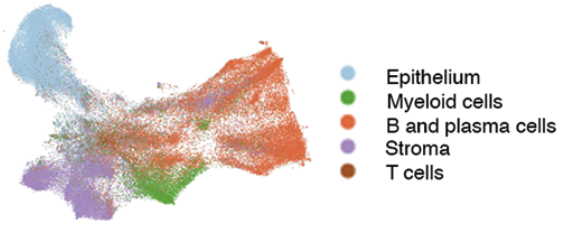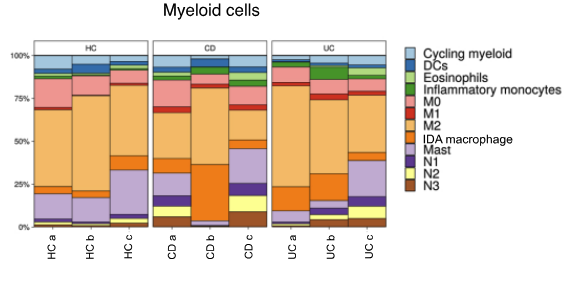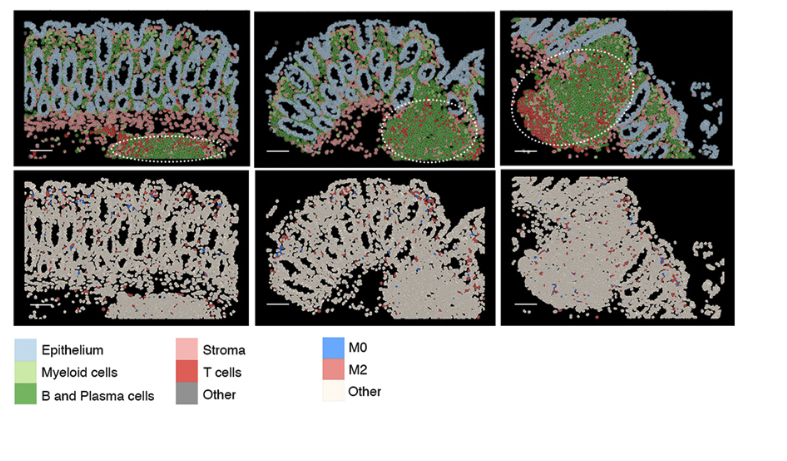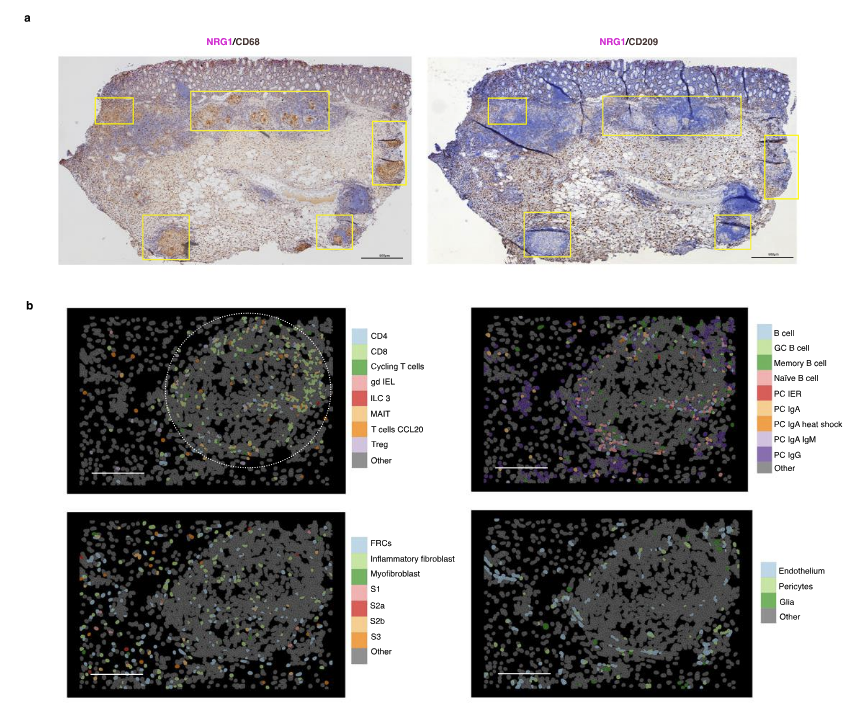13 Next steps
We’ve done a fairly streamlined preprocessing of a single cell spatial dataset. At this point in the analysis it would be time to drill into the biology and start doing some focussed analyses. What might be possible?
13.2 Other techniques
13.2.2 Downtream annotation and analyses
Niche analysis
Cell ‘niche’ analysis or ‘spatial context’ is a major avenue of in situ spatial analyses. E.g. tumour microenvrionments, tissue regions. The actual definition of what a ‘niche’ is could be considered flexible - it depends on what you are trying to achieve - and different tools take differnt approches.
- Seurat findNiches()
- OSCA neighbourhood analyses: https://lmweber.org/OSTA/pages/img-neighbourhood-analysis.html
- hoodscanR : https://www.bioconductor.org/packages/release/bioc/vignettes/hoodscanR/inst/doc/Quick_start.html
- GraphST : https://www.nature.com/articles/s41467-023-36796-3
- Many more …
‘Spatial’ pattern tests and cell free analyses
Huge area of research, here are some starting points;
- Co-localisation and differential co-localisation: https://lmweber.org/OSTA/pages/mult-diff-spatial-patterns.html
- Statial toolkit (Kontextual and Spatiomark) for quantifying spatial relationhips and expression with spatial contet: Statial package
- Spatial tests, adapted form geospatial methods: https://pachterlab.github.io/voyager/
- Molecule level data object (not a SingleCellExperiment): https://www.bioconductor.org/packages/release/bioc/html/MoleculeExperiment.html
- Many more …
Differential expression
Though current gen single-cell spatial techonlogies have lower counts and fewer genes in a panel than single cell (and bulk) studies, being able to test for differences in gene expression is valuable; potentially within a celltype, niche or spatial region that couldn’t be isolated with other technologies. With this in mind, single cell methods can be applied.
- Differential expression in scRNAseq (bioconductor): https://bioconductor.org/books/3.21/OSCA.multisample/multi-sample-comparisons.html
- Applied example (in this same dataset!) running differential expresison at the celltype level using Seurat or bioconductor ecosystem
- Spatially-aware differential expression methods; These are emerging quickly, consider looking into Differential gene expression analysis of spatial transcriptomic experiments using spatial mixed models and spacexr
- Many more …
Differential abundance
Differences in the numbers or types of cell in a particular location or neighbour niche between groups can indicate biological differences; from cell migration, expansion or development.
- Propeller for testing celltype proportion changes: https://github.com/phipsonlab/speckle
- Many more …
Multiomics
Another huge area of research, here are some starting points. It very much depends on which multiomics you have.
- Seurat multimodal vignette (single cell): https://satijalab.org/seurat/articles/multimodal_vignette (single cell)
- Image registration, for aligning images from different sources. E.g. H&E, immunofluorescence, proteomics e.t.c : https://lmweber.org/OSTA/pages/crs-spatial-registration.html
- Many more …
13.2.3 Visualisation
There are many tools out there, each with strengths and limitations.
- VRomics: https://ramialison-lab.github.io/pages/vromics.html
- Xenium explorer (Xenium only): https://www.10xgenomics.com/support/software/xenium-explorer/latest
- AtoMx (cosmx only) : https://nanostring.com/products/atomx-spatial-informatics-platform/atomx-sip-overview/
- Napari cosmx guide
- CellXGene (single cell) : https://cellxgene.cziscience.com/
- iSEE (single cell): https://github.com/iSEE/iSEE
- Many more …



